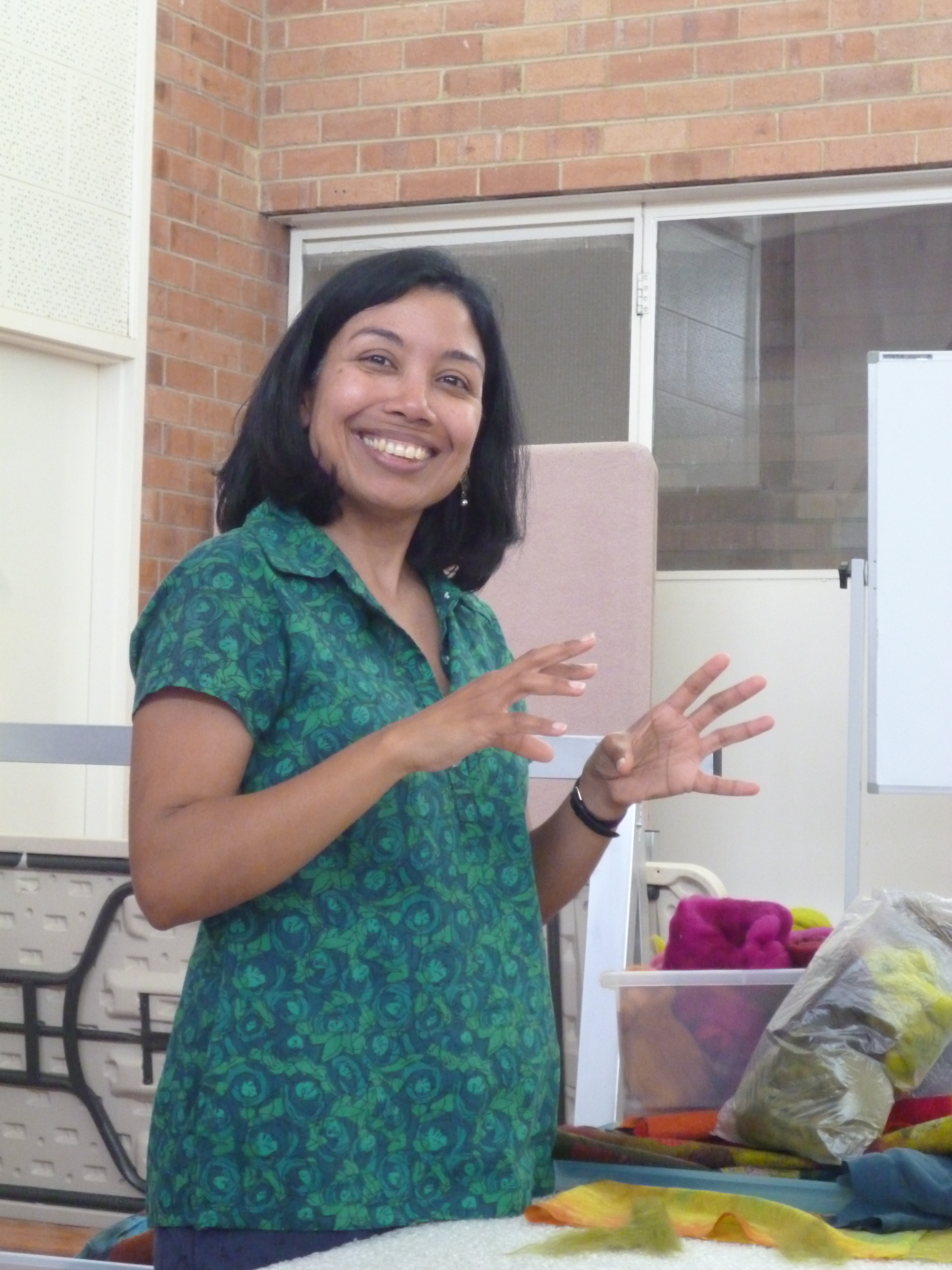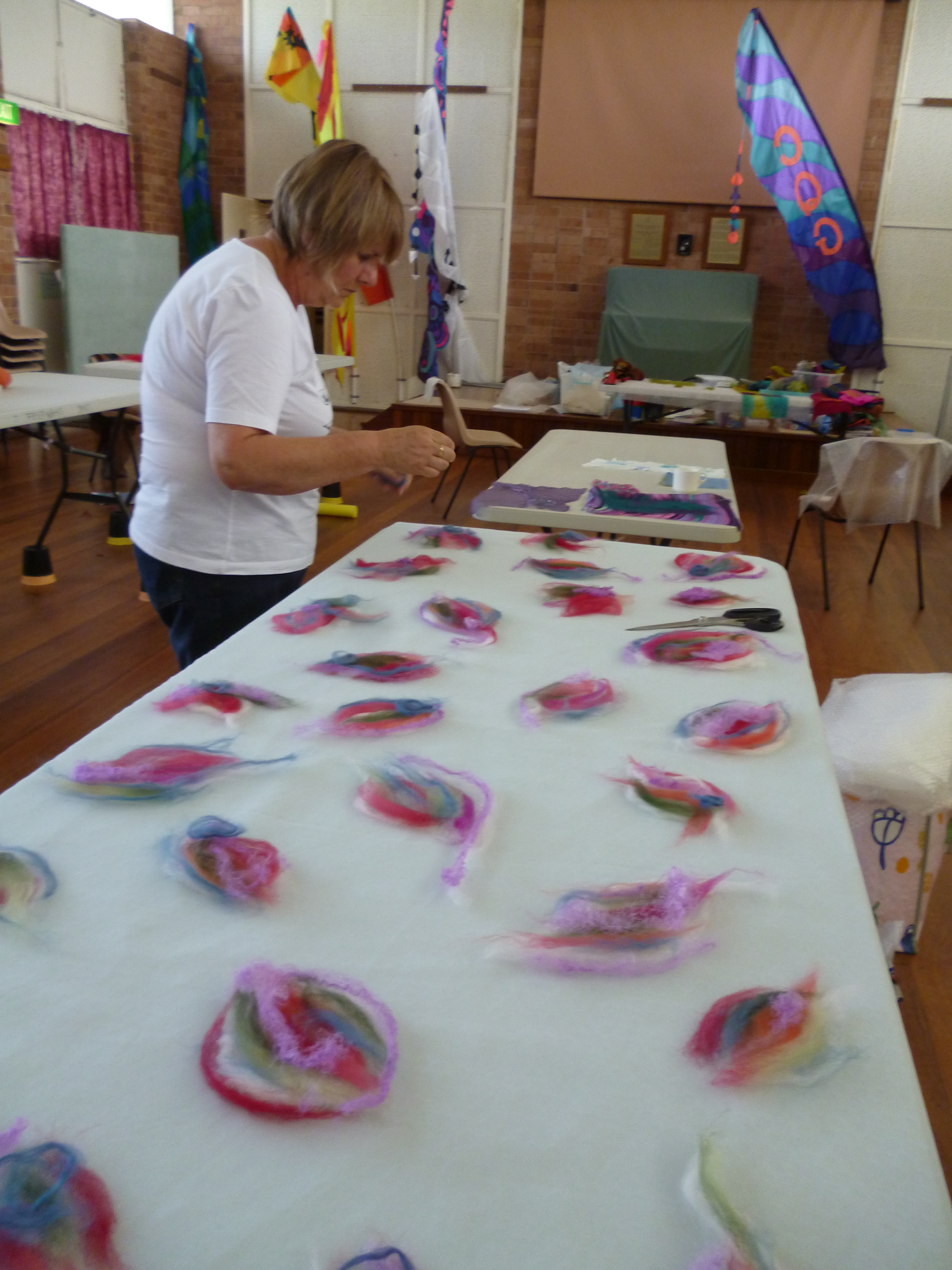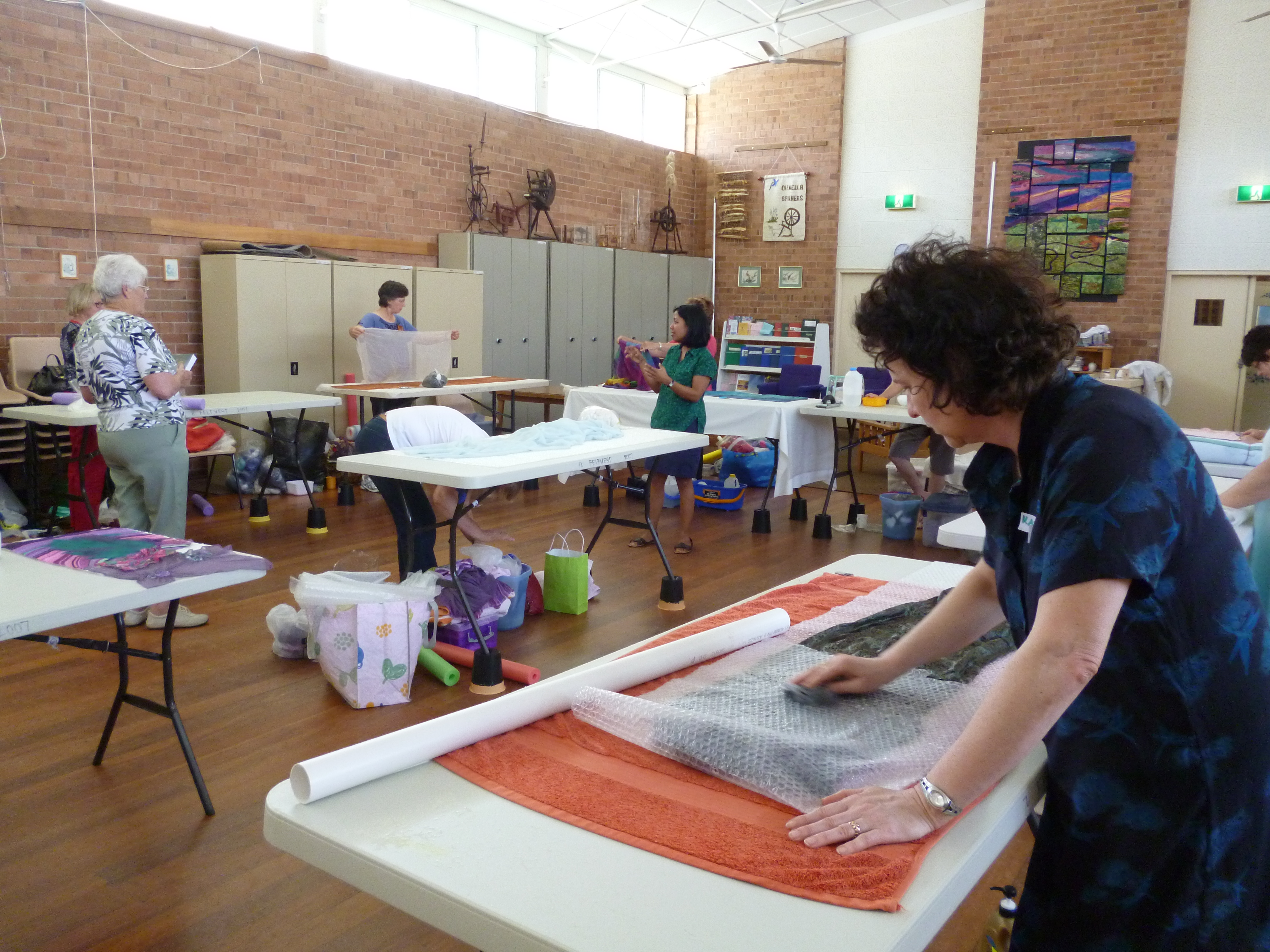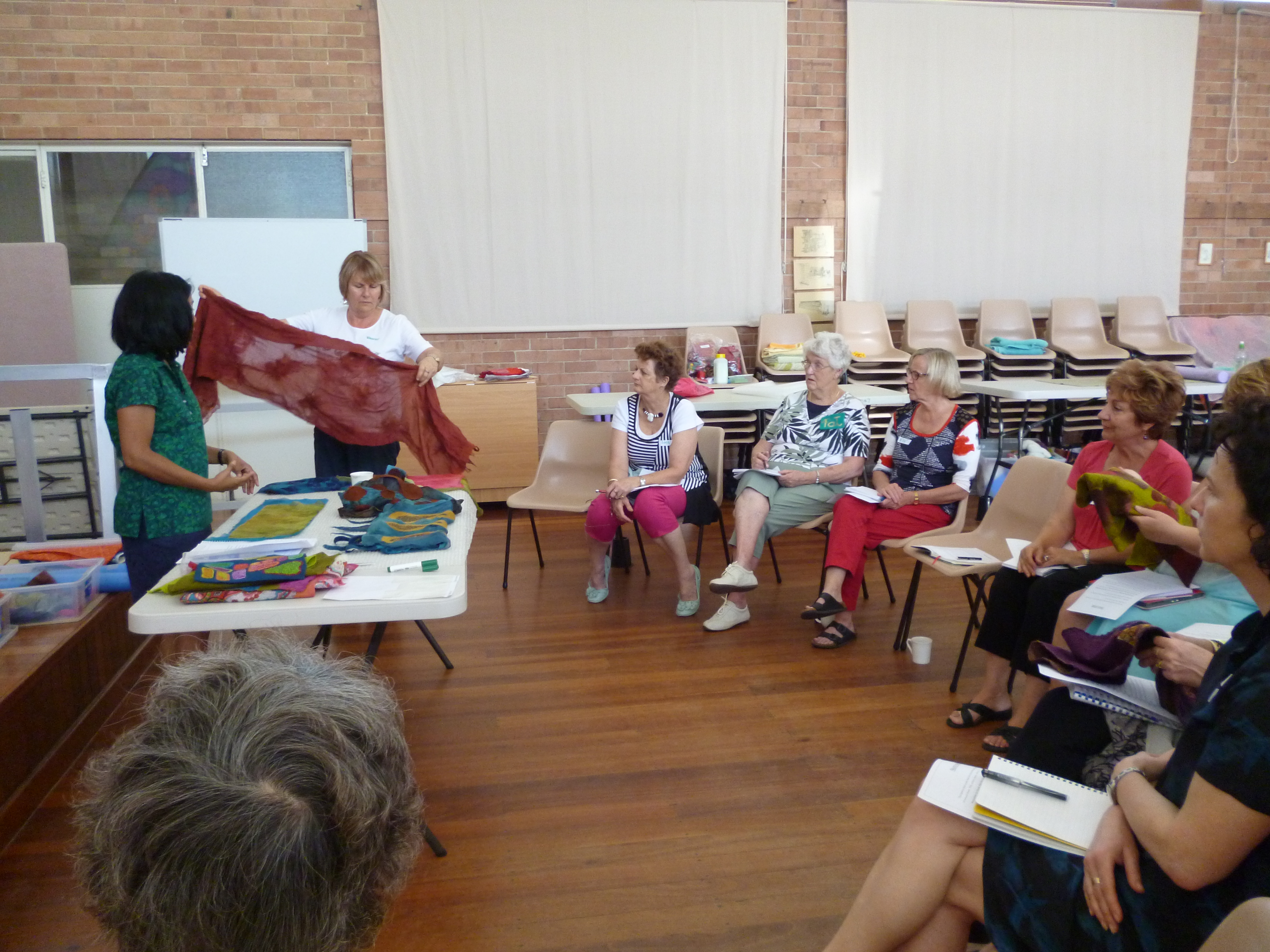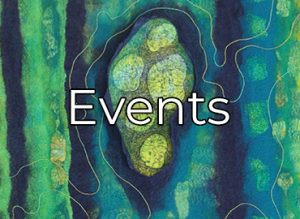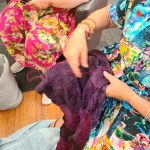
There was a palpable air of excitement as eleven fortunate felters gathered for Alison’s workshop on Nuno felting. We started with a classroom session and to break the ice, we all introduced ourselves and explained why we loved felting. It was very obvious from everyone’s comments that Alison’s work is held in very high regard and that everyone was very excited to be in the class to learn from her experience. No pressure of course for Alison!!
Alison explained that she has been felting for five years and loves it. She gets the ‘DT’s’ if she doesn’t felt most days. Alison has commandeered the family kitchen table for felting, Monday to Thursday and grudgingly relinquishes it to the family for weekendsJ Her joy and love of felting is obvious. Alison loves experimenting and exploring with felt and out of that processes comes some ‘happy successes.’ Alison explained it as ‘the joy of felting.’
Alison demonstrated the four basic techniques of nuno felting:
1) Wool base with fabric on top
2) Fabric base with wool on top
3) Laminating wool between two or more layers of fabric
4) Making nuno pre-felts to use as patterns on wool rovings, bats or fabric bases.
She also explained the types of fabric that work well in nuno felting and passed around examples of her work that illustrated the various techniques with various types of fabric incorporated in the finished article. We were able to see and feel the textures that can be achieved. Fabrics that work well include the open weave silks – chiffon, organza, georgette; devore and silk velvet; rayon; open weave cotton scrim fabrics but use in a double layer; yoryu silk will felt but shrinks in the direction of the longitudinal weave (weavers – is that warp or weft?). Tightly woven silks will felt with difficulty or not at all. Synthetic fabrics will not felt, especially synthetic velvet.
After a quick refresher on laying out wool and the old chestnut ‘shrinkage’ it was down to work! Some of us worked on samples and some started their major piece. After lunch we had a quick session on the use of colour with the instructions to be brave and bold and experiment. To quote Alison, ‘Wool, like paint can be colour mixed to great effect.’
Then it was back to work to finish items already started and to commence work on a scarf or other item.
Take home lessons for nuno felting and felting generally:
the finer you lay your wool the more it shrinks; use warm water; if you add soap to your water bottle it should be cloudy NOT foamy; in winter you can bring your piece to room temperature in the microwave – don’t cook it though!; be gentle; use your hand to ‘dry felt’ fine wool pieces to keep them in place; use wisps of wool over fabric to help them adhere to fabric; BE GENTLE when fulling; keep checking, stretching when fulling; lift your noodle when rolling to reduce/eliminate creases; don’t roll too tightly; when fulled rinse in tepid water, that gradually becomes colder as the soap washes out. Lay flat to dry. When your piece is almost dry, iron it face down ir on the back, covered with a towel and on a steam setting. If you are using a felbi bat for motifs, you can line them with wool or use two pieces for more body. Always weight your wool and record it so that you know how much wool you need for the thickness you want. Alison suggested 30-35 gms of wool for a fine wool scarf with two layers. Handle rovings as little as possible. Roll up rovings and store in open plastic bags under dry conditions or paper bags if it is humid. Cedar wood oil is a good moth repellant.
We look forward to the November Show n Tell to see the results of the day.
A huge thank you to Alison for the day. It was a wonderful day of learning, sharing, fun and new friendships which is, as those of us who are newish to felting, have come to understand as a normal state of affairs! I’m sure that I speak for other ‘newbies’ when I say that we are very thankfull for the generosity of the tutors and the other felters.
